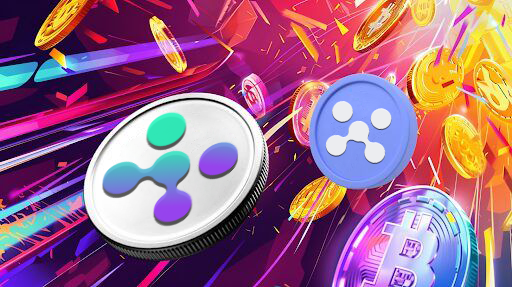As decentralized exchanges (DEX) continue to evolve, the automated market maker (AMM) model provides users with a simple and convenient trading experience. However, with the maturation of the market, we are witnessing a gradual differentiation within the DEX space. This article explores two key projects—Uniswap and XBIT—analyzing their characteristics, how they stand out in competition, and their significance in decentralized finance (DeFi).
Uniswap: The Dominant Player in the AMM Market
Since its launch in 2018, Uniswap has consistently been a leader in the DeFi space. With its user-friendly interface and innovative AMM mechanism, it quickly gained popularity among users. Participants can earn trading fees by providing liquidity, enabling them to trade without relying on centralized intermediaries.

Several factors contribute to Uniswap's success. Firstly, its user interface is exceptionally friendly, allowing even newcomers to navigate effortlessly. Users only need to connect their digital wallet, select the token pair, and execute trades—eliminating the cumbersome registration and identity verification processes. Secondly, anyone holding tokens can become a liquidity provider (LP), fostering widespread participation in this expanding ecosystem.
Moreover, Uniswap employs a decentralized governance model whereby users participate in protocol decisions, including contract upgrades and fund allocations, through the governance token, UNI. This mechanism not only enhances community involvement but also improves the transparency of the protocol.
Despite Uniswap maintaining its position as the market leader, it faces an increasing number of competitors. User demand for innovation and lower trading costs drives other platforms to continually improve trading efficiency and reduce slippage.
XBIT: An Innovator with Zero Liquidity Pool Design
In contrast, XBIT is an emerging decentralized trading protocol that employs a "zero liquidity pool" design. This innovation not only enhances user security but also challenges the traditional liquidity pool model.
Traditional AMM models require users to deposit funds into liquidity pools; however, these liquidity pools are susceptible to attacks, potentially resulting in user losses. XBIT's zero liquidity pool design ensures that users always have control over their funds, with seamless asset exchanges occurring only at the moment of trade execution. This means that even during significant market fluctuations, users' assets remain secure.

On the XBIT platform, users need not worry about the risks associated with traditional liquidity pools, such as impermanent loss or hacks that can deplete pool assets. The zero liquidity pool design minimizes potential security vulnerabilities, ensuring that trades are executed directly and transparently. This offers a safer environment for users, particularly in volatile market conditions.
Additionally, XBIT's model aims to reduce trading costs. By eliminating the need for liquidity pools, the protocol can offer lower fees compared to traditional AMM exchanges. This enables users to retain more of their trading profits while still benefiting from efficient exchanges and quick transaction speeds.

XBIT's innovative approach paves the way for a new paradigm in decentralized trading. By focusing on security and performance, it appeals to users who prioritize a safe trading experience. As awareness of security concerns in DeFi increases, platforms like XBIT that emphasize protecting user assets may attract a significant user base.
The DEX landscape is evolving, and while Uniswap continues to shine as a leader in the AMM space with its user-friendly approach and decentralized governance, emerging protocols like XBIT are challenging the status quo with innovative designs that prioritize security and efficiency. As the decentralized finance ecosystem continues to mature, the competition among these platforms will likely drive further innovation, enhancing the trading experience for all participants.
Each has its unique value propositions, and together, they contribute to the overall development and diversification of the DEX market. Future advancements will be critical in defining how users interact with DeFi platforms, making it an exciting space to watch.
















No comments yet